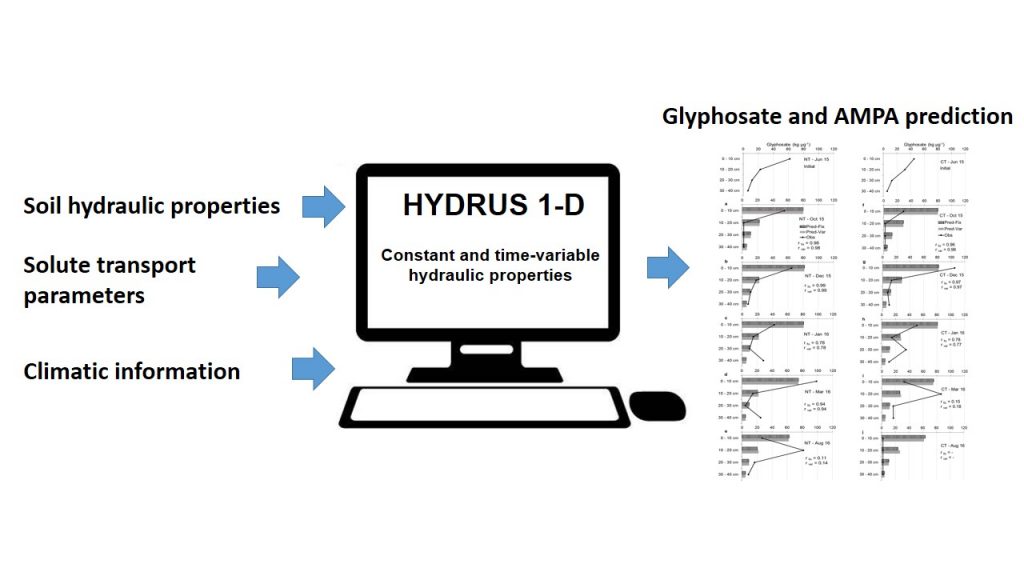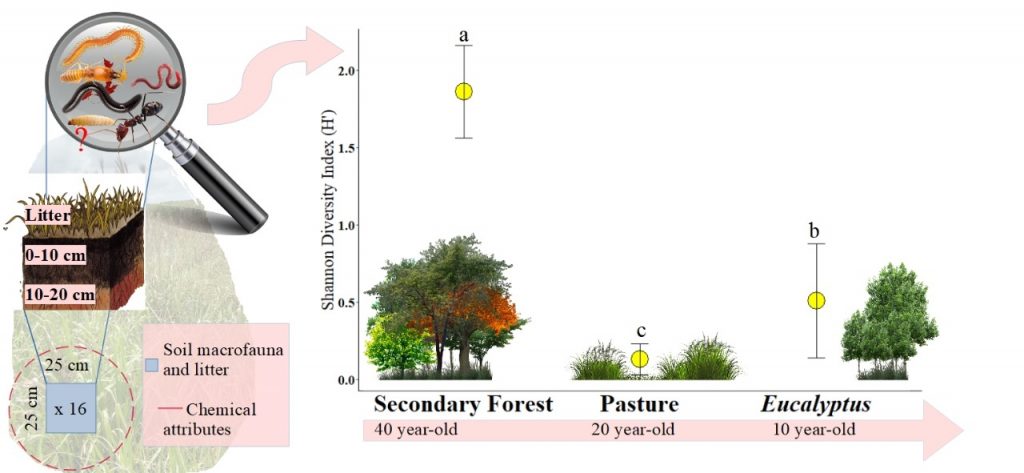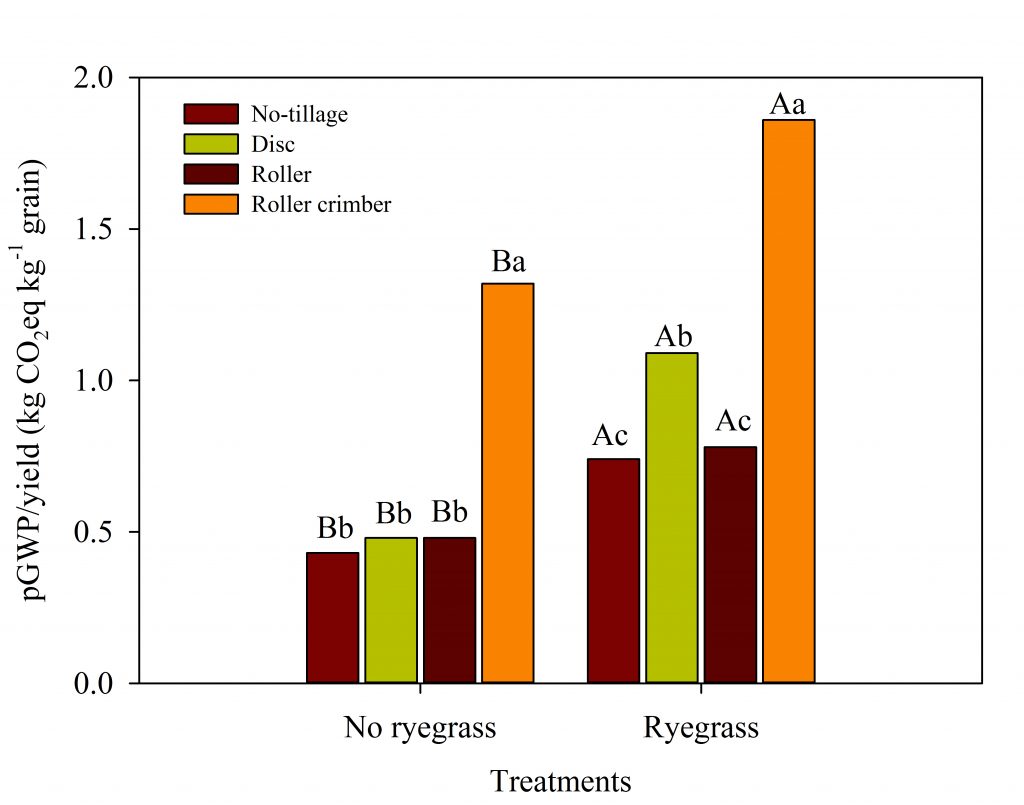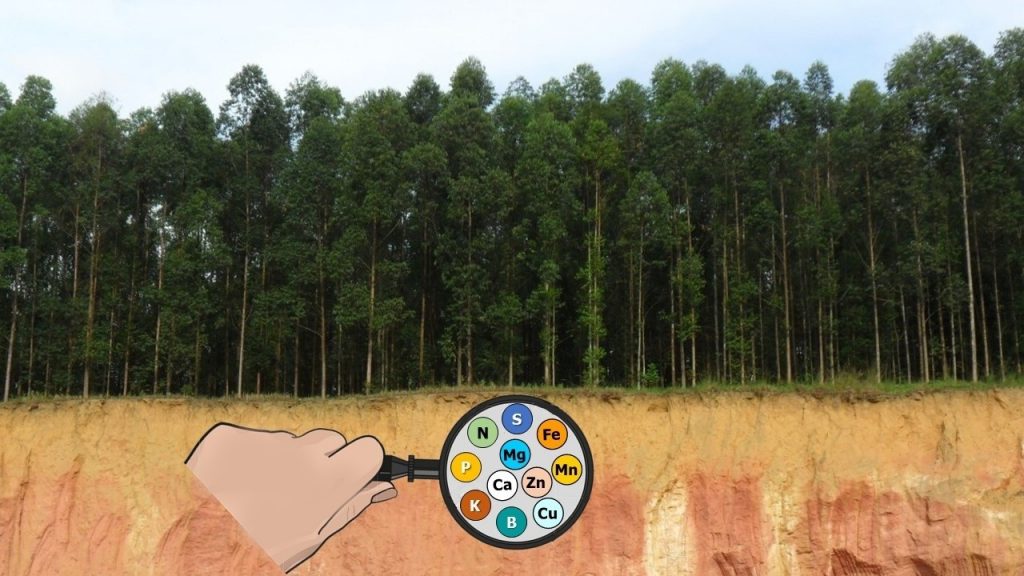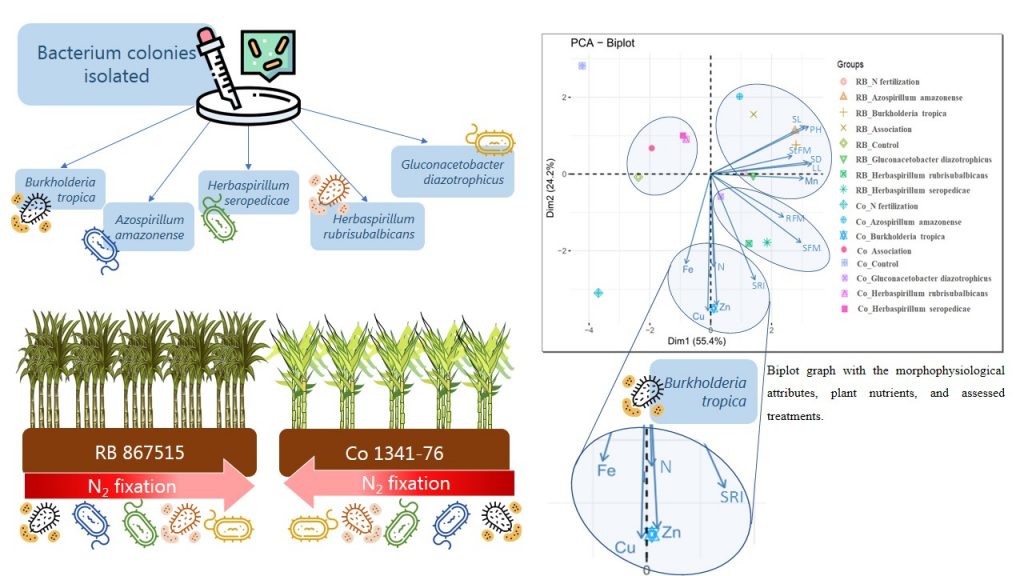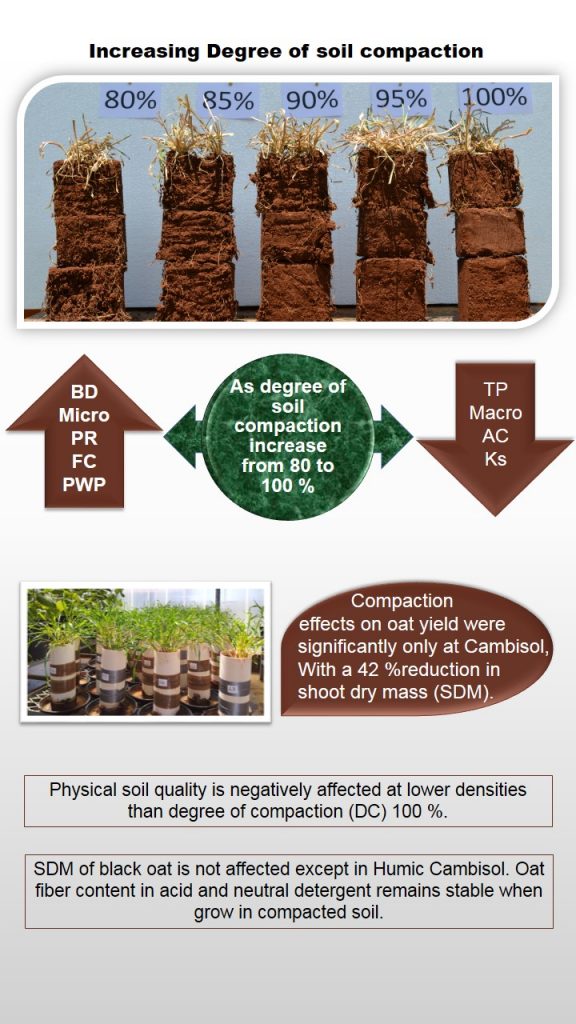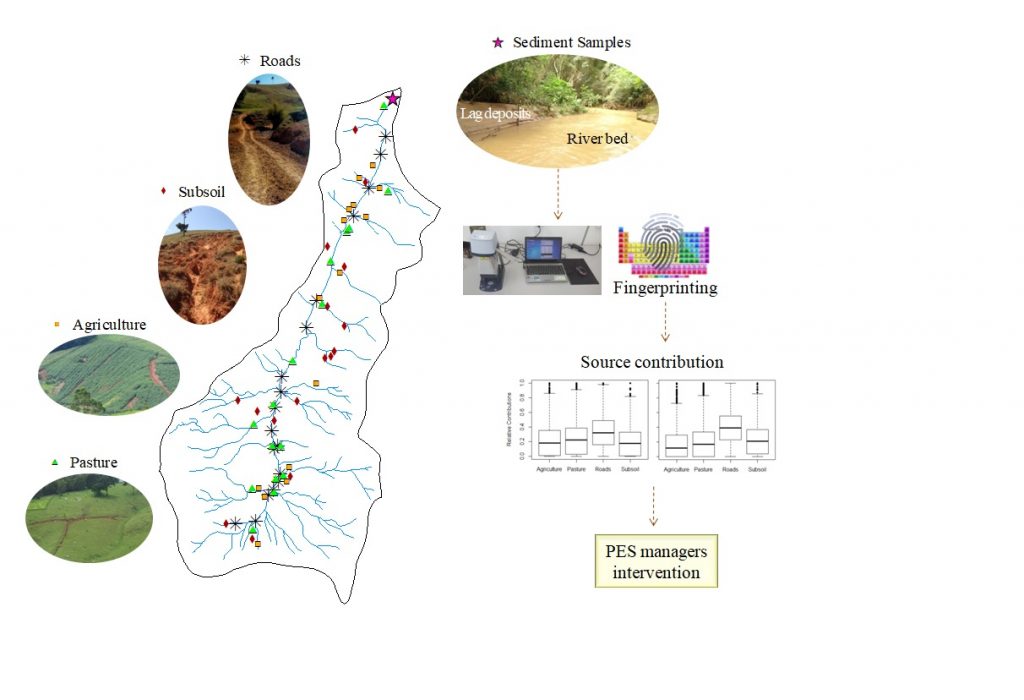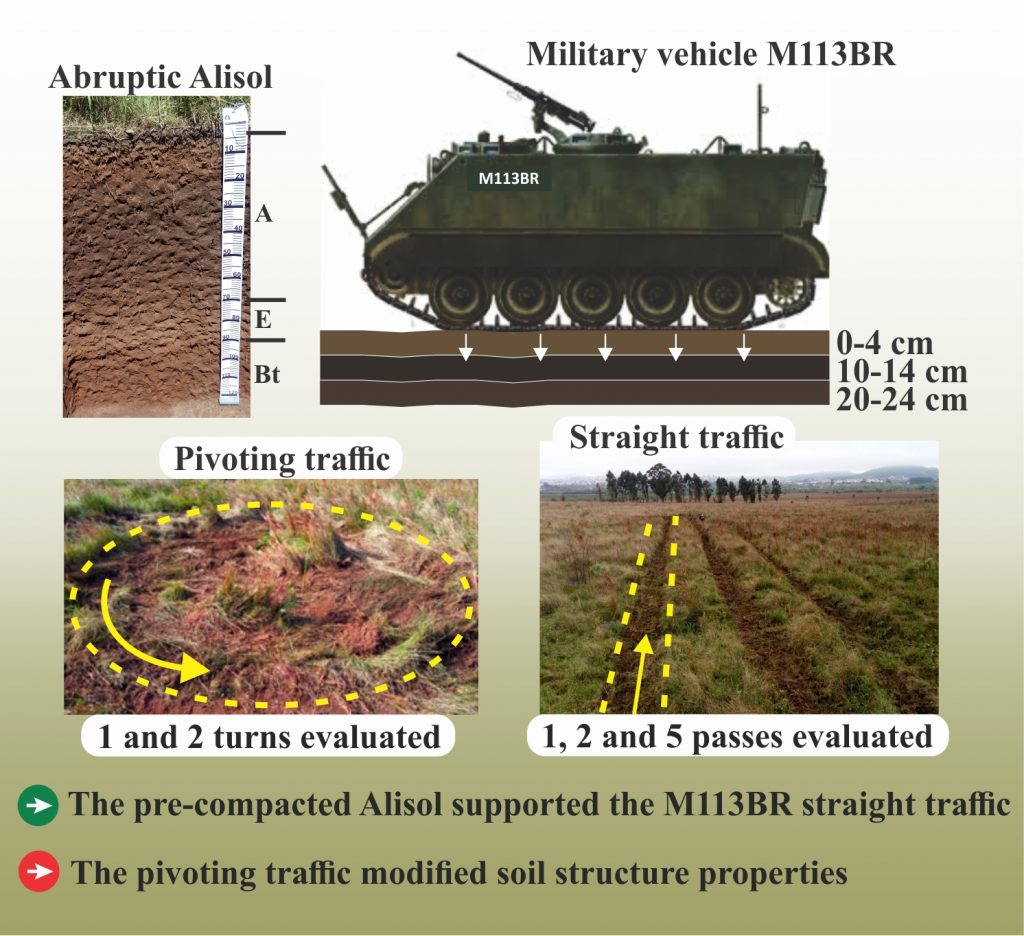Volume 44, 2020
Glyphosate dynamics prediction in a soil under conventional and no-tillage systems during the crop cycle
05/Jun/2020
ABSTRACT Simulation models are efficient tools to predict the fate of different solutes in agricultural soils. This work aimed to compare measured and predicted glyphosate and AMPA (aminomethyl phosphonic acid; its main metabolite) contents in a soil under no-tillage (NT), and conventional tillage (CT); and to compare the predictions considering constant and time-variable hydraulic properties. Additionally, we evaluated the ability of the model to predict glyphosate and AMPA accumulation during the crop cycle. Hydrus 1-D code was used to predict […]
Termite participation in the soil-forming processes of ‘murundus’ structures in the semi-arid region of Brazil
26/May/2020
ABSTRACT Regularly spaced earth mounds called “murundus” are scattered in several landscapes in the semi-arid region of Brazil. Although recent evidence indicates that termites are involved in the building of murundus, the contribution of these insects to soil-forming processes in those structures remains poorly understood. In this study, we tested a set of hypotheses to examine whether there are consistent evidence for suggesting the participation of termites in the formation of murundus soils. Morphological and physicochemical features of murundus were […]
Diversity and abundance of soil macrofauna in three land use systems in eastern Amazonia
19/Jun/2020
ABSTRACT Given the influence of edaphic macrofauna in the physical, chemical, and biological processes that sustain the organic matter cycle in the soil of tropical ecosystems, this study aimed to evaluate the effect of the sequence: Secondary Forest – Pasture – Eucalyptus monoculture on the macrofauna structure in Southeast of Pará State, Brazil. In each land use system, two 350 m transect were taken. The data was collected in 8 sampling sites, which were 50 m apart in each transect […]
Greenhouse gas emissions during rice crop year affected by management of rice straw and ryegrass
03/Aug/2020
ABSTRACT One of the challenges in rice areas is the sustainable post-harvest system, which involves using rice straw management and cover crop species. In this context, this study aimed to evaluate the emission of methane (CH4) and nitrous oxide (N2O) with the use of different post-harvest management of rice straw as well as with the combined use of ryegrass. A field experiment was conducted during the 2016 off-season and 2016/17 rice crop season with different post-harvest rice straw management: maintaining […]
Establishment of critical nutrient levels in soil and plant for eucalyptus
26/May/2020
ABSTRACT The adoption of more productive and nutrient-demanding genotypes, in addition soils with low availability of nutrients of soils under forest plantations, lead high fertilizer demand and justify research that seeks to rationalize the use of these inputs. Therefore, we aimed with this research to determine classes of interpretation of soil fertility using boundary line (BL) and estimate macronutrient sufficiency ranges for eucalyptus. Fertility classes and sufficiency ranges were obtained using a database of areas cultivated with eucalyptus in the […]
Associative diazotrophic bacteria inoculated in sugarcane cultivars: implications on morphophysiological attributes and plant nutrition
01/Sep/2020
ABSTRACT Sugarcane is one of the first activities of economic importance in Brazil. The understanding of the nutritional dynamics at different phenological stages of the sugarcane crop with the use of nitrogen-fixing bacteria has been one of the alternatives to decrease fertilizer consumption and increasing plant production. This study aimed to assess the morphophysiological attributes in the initial growth and nutrition of two sugarcane varieties inoculated with strains of diazotrophic bacteria, individually and in an association, in a greenhouse. The […]
Soil compaction effect on black oat yield in Santa Catarina, Brazil
16/Jul/2020
ABSTRACT Cultivated soils, when submitted to agricultural practices, tend to compact due to the pressure exerted by agricultural machines and implements, a process that compromises soil quality and system sustainability. Specific properties of each soil, such as particle size and organic matter content, interfere with the process and degree of compaction and, consequently, plant growth. This study aimed to analyze the effect of different degrees of compaction (DC) on soil physical properties and black oat (Avena strigosa Schreb) growth. For […]
Soil loss as a desertification risk indicator: mapping and simulation in the Salitre River Sub-Basin, Northeast Brazil
26/May/2020
ABSTRACT Discussions on desertification frequently highlight soil erosion as a striking feature of this phenomenon. In particular, the high spatial density of gullies represents a strong indication of the formation of desertification hotspots. In this study, through field activities and Monte Carlo simulations, we estimated the volume of soil loss by linear erosion on the slopes of the middle course of the Salitre river in the North of Bahia State. This estimative contributes to the recognition of a desertification process […]
Monitoring land use impacts on sediment production: a case study of the pilot catchment from the Brazilian program of payment for environmental services
18/Aug/2020
ABSTRACT Through the lack or non-use of conservationist criteria for adequate land use and management, the scarcity of natural resources becomes ever more evident. This study aimed to analyze the origin of the sediments in the Posses catchment, municipality of Extrema, state of Minas Gerais, Brazil, throughout the fingerprinting technique and portable X-ray fluorescence. Samples from soils under agriculture, pasture, and roads; and from the subsoil of theses land uses were taken in a widespread and representative manner from the […]
Physical properties of a Brazilian sandy loam soil after the traffic of a military vehicle M113 BR
06/Nov/2020
ABSTRACT Soil physical properties can be changed after vehicle traffic, especially by heavy military tracked vehicles. The Santa Maria military Instruction Field, where the experiment was carried out, is currently the most used area for armored tracked vehicles training in Brazil, with the M113 BR being the main equipment. The aim of this study was to determine the effect of the straight line and pivoted traffic intensity of the M113 BR on the physical properties and advancement of the compaction […]

